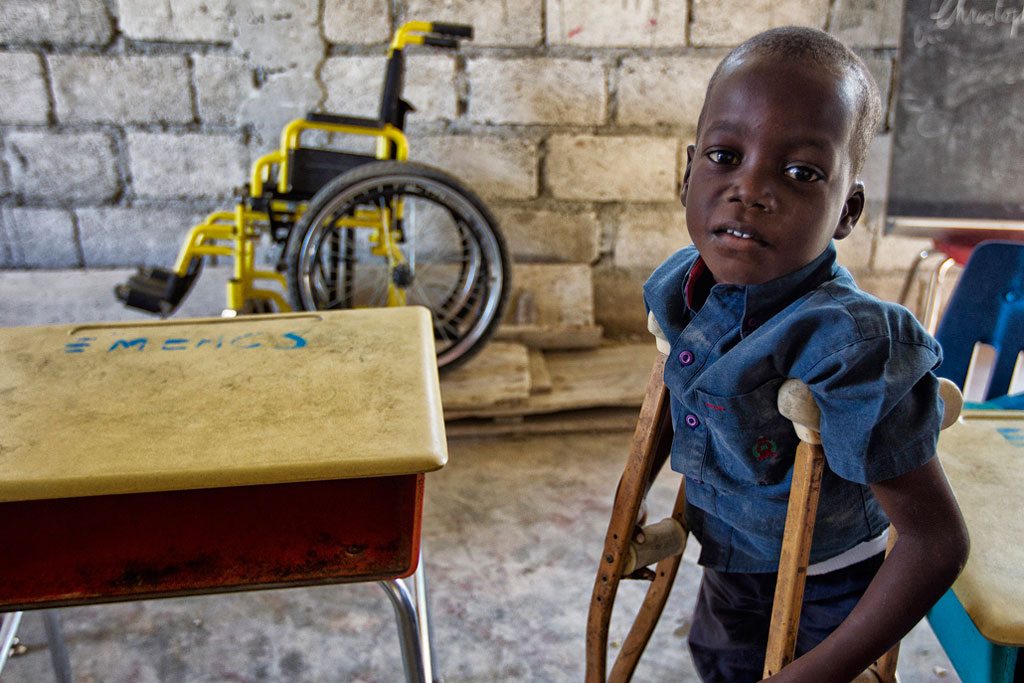Marking the 10th anniversary of a United Nations treaty that protects the rights of persons with disabilities, senior UN officials today highlighted the critical role people with disabilities play as invaluable partners to achieve the 2030 Agenda for Sustainable Development.
“Through the power of music and the arts, these talented women and men are living examples of our core message: disability is not inability,” said UN Secretary-General Ban Ki-moon in a video message, referring to artists from the Beautiful Mind Charity, “4WheelCity” and the Samulnori team who are performing at UN Headquarters.
“Let us work together for a world of opportunity and dignity for all, a future of inclusion, one in which we all gain by leaving no one behind,” he added.
Implementing the new Sustainable Development Goals (SDGs) for all persons with disabilities is the main focus of the Parties to the Convention on the Rights of Persons with Disabilities (CRPD) as they meet in New York from today through Thursday.
Gathering hundreds of disability advocates and government delegates, the 9th Session of the Conference of States Parties to the CRPD constitutes one of the largest and most diverse international meetings on disability in the world.
The UN is underlining that the annual review of the Convention will examine the implementation of the binding agreement adopted by the UN General Assembly in 2006 to reaffirm that the one billion persons with disabilities – 15 per cent of the world’s population – must enjoy all human rights and fundamental freedoms.
“There is still much more we can do to fully implement the CRPD and make rights a reality for the more than one billion persons with disabilities around the world,” said the UN Chef de Cabinet, Edmond Mullet, speaking on behalf of the Secretary-General at the opening of the meeting.
“The Conference of States Parties offers a good opportunity to reflect on important lessons and move forward – as your theme puts it – in ‘Implementing the 2030 development agenda for all persons with disabilities: Leaving no one behind,’” he stressed.
Mr. Mullet also highlighted some of the progress made in recent years, such as disability-inclusive strategies being featured in the Sendia Framework for Disaster Risk Reduction, while most recently at the World Humanitarian Summit, stakeholders highlighted the importance of furthering humanitarian actions that are responsive to the needs of persons with disabilities.
In his opening remarks, General Assembly President Mogens Lykketoft said international commitments to the rights and advancement of persons with disabilities are deeply rooted in the UN Charter. Indeed, they have been elaborated on over many decades through the Convention, as well as the outcome document of the 2013 High-level Meeting on Disability and Development of the General Assembly.
“And finally, now, thanks to the advocacy of disability organizations and concerted efforts of many others, they have been included at the heart of the 2030 Agenda – an agenda that promises to leave no one behind,” he said, adding that in the SDGs, disability is not about needs but about rights and empowerments.“Persons with disabilities have been given specific prominence across a range of the goals as well as in relation to data collection and monitoring of the SDGs,” he said. Recalling that yesterday, his office organized a General Assembly panel discussion on disabilities and that yesterday morning, civil society also held its annual forum which this year focused on leaving no one behind, Mr. Lykketoft said that the high level of interest and participation in these meetings was very encouraging.
Disabilities and the Sustainable Development Goals
The Conference is also the first UN gathering on disability since the adoption of the SDGs in September 2015. Disability is referenced in various parts of the SDGs’ targets, including in relation to education (to ensure equal access to all levels of education, including for persons with disabilities); growth and employment (to promote decent work and equal pay for all); inequality (as Goal 10 calls for the empowerment and inclusion of all regardless of any status including disability), accessibility of human settlements, as well as data collection and monitoring of the SDGs.
Eliminating poverty and inequality for all persons with disabilities
With 20 per cent of the world’s poorest persons living with disabilities, the link between poverty and disability will be a key emphasis of the meeting. Persons with disabilities are statistically more likely to experience poverty, while poverty itself also increases the incidence of disability.The link between poverty and disability is particularly striking as 80 per cent of persons with disabilities live in developing countries. This also marks disability as a significant cross-cutting issue of the new development agenda.
The rights of persons with mental and intellectual disabilities
The meeting will also address the rights of persons with mental and intellectual disabilities as there is a growing recognition within the international community that invisible disabilities, such as mental, psychosocial or development disabilities, are some of the most neglected yet essential conditions to take into account in order to achieve internationally agreed development goals.While exact numbers are unknown, persons with such disabilities represent a significant proportion of the world’s population. Millions of people worldwide suffer from mental health conditions and an estimated one in four people globally will experience a mental health condition in their lifetime.
The UN estimates that almost one million people die due to suicide every year, and it is the third leading cause of death among young people worldwide. Mental health conditions, including alcohol abuse, are among the ten leading causes of disability in both developed and developing countries. In particular, depression is ranked third in the global burden of disease, and is projected to rank first in 2030.
via UN News Centre




